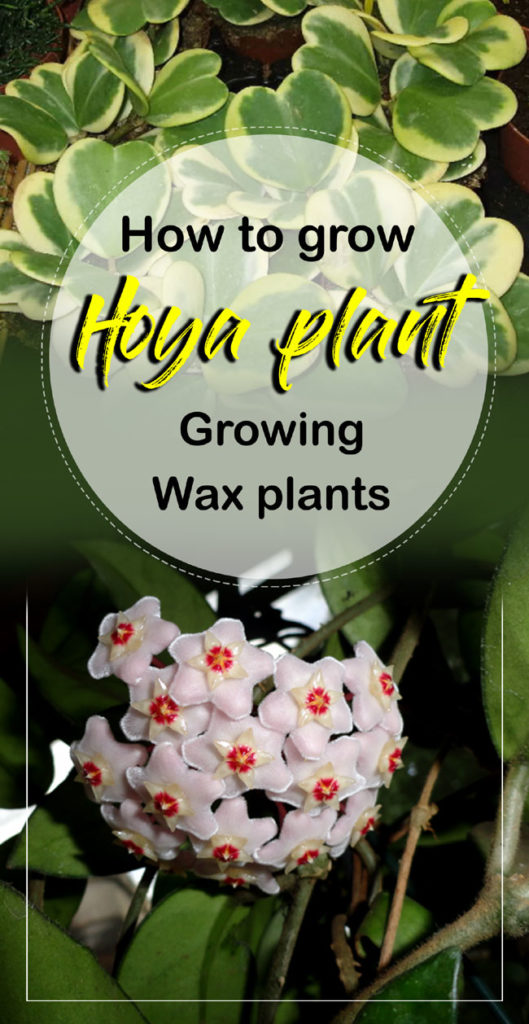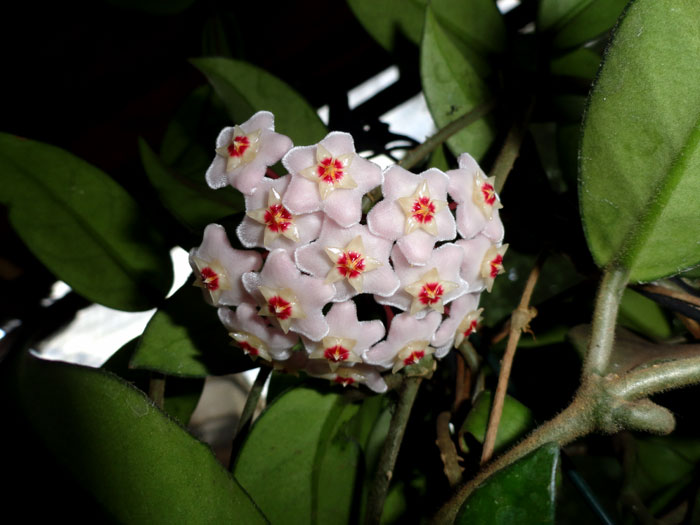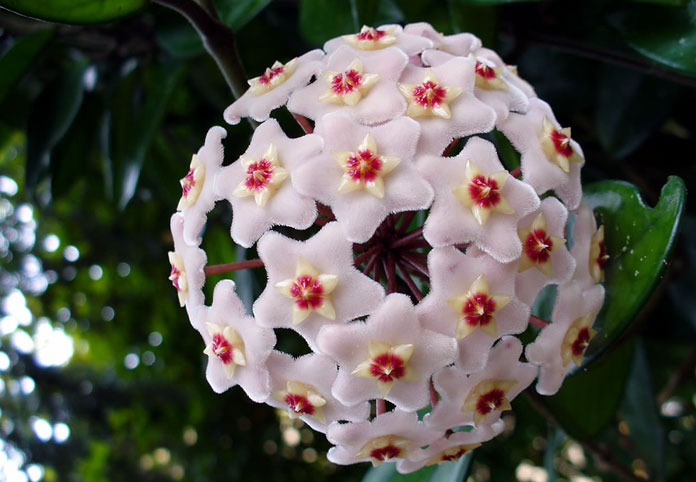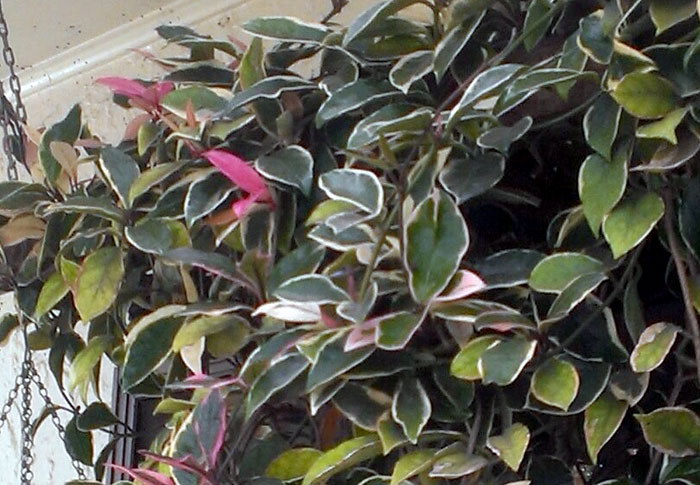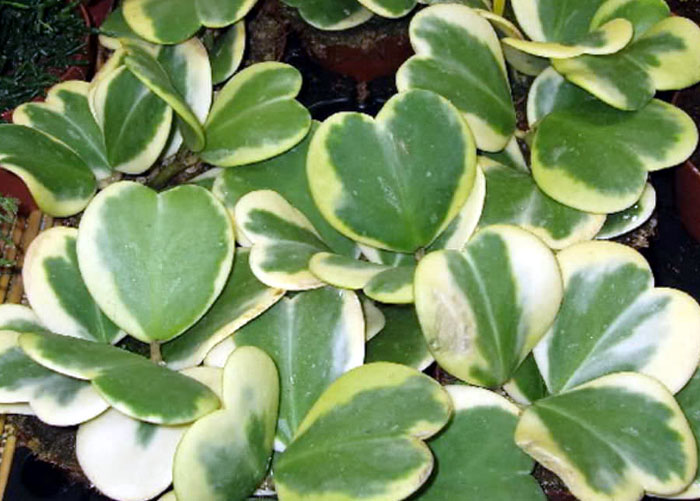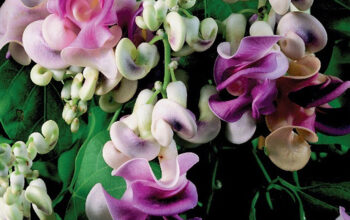Hoya plants
Learn How to Grow and care Hoya plants, Growing wax plant, Hoya plants care, Varieties of wax flower, and more about this plant. Hoya plants were named in the 18th century by Scottish botanist Robert Brown. This is an Asian native plant, and native from India, Burma, China, and Australia. itis a low maintenance aromatic tropical flower. Hoya carnosa is a member of the Apocynaceae family. Wax plants are known by many other names such as wax plants, wax flowers, Indian rope plants, porcelain flowers, hoya carnosa, and honey plants.
Hoya carnosa is also commonly called wax plant because its leaves and flowers look like a carved from wax. Hoya plants can be grown in USDA Hardiness Zone 9 to 11 in outdoor. This means that they can survive at temperatures below 20 degrees Fahrenheit. Although people like to plant it inside the house, it is easy to plant in the home. Its lengthy stems can be trained to develop the trail. With long stems, it can also be applied in hanging baskets. When the plants grow larger then Hoya flowers bloom in a ball-shaped cluster, which can be seen from a distance of hydrangea. Read more.
Popular names wax flower
wax plants, wax flower, Indian rope plant, porcelain flower, and honey plant, Lucky heart, wax vine, Sweetheart plants, hoya carnosa, Green wax plant.
Classification Wax flower
Scientific name Hoya carnosa
Common name Hoya flower, Hoya plant, Wax flower
Plant type Flowering vine
Sun requires Full Sun
Blooming time Early fall
Flower colors Pink, Lilac, white
Soil Fertile- well-drained soil
Soil pH 6.0-6.5
Zone 9-12
Growing condition of Hoya plants
Soil and Location
For this, well-drained soil is required. You can use the orchid potting mixture or the homemade potting mix with lots of perlites. Wax plants are epiphytic and do not require heavy, more conventional soil. To develop this, the mixture of pine bark, perlite, and peat moss is most suitable. The most popular mixture is that one portion of pine bark and two parts of Pete Moss, in which a small quantity of dolomitic lime is added, this mixture reduces acidity. You can add perlite to increase its drainage capacity.
Hoya carnosa likes bright and indirect light, although they can tolerate full sunlight in spring or fall, the excessive summer sun can damage its lush leaves and lose its natural color. If you want to develop the Hoya Plant, it is necessary to light up at least 6 hours of bright and indirect sunlight.
Watering
Hoya plants are tropical plants that can be given water by cold tap. When potting soil almost completely dries, then water the plant. Give the plant water early in the morning, so that the plant will get adequate moisture throughout the day, but also make sure the leaves dry out by night. Pour the water in the pot normally, until it starts moving out of the surface. Do not allow the soil to wet due to excessive water, because its roots prefer oxygen and its deficiency can root rot.
Fertilizer
During spring and summer, you feed your plant in a balanced and water-soluble fertilizer every three to four weeks. Fertilizer with a ratio of 5-10-5, 8-8-8, or 10-10-10 is most suitable for it. Depending on the plant’s health and the nature of bloom, you give fertilizer to your plant. If its leaves and stems start to yellow, fertilizer should be given every two weeks. If fresh leaves remain small and deep, then give Hoya fertilizer every six weeks. Read more.
Propagation
The easiest way to propagate by either stem cutting or air-layering, but many people also propagate it through leaf cuttings or seeds.
Wax plant care
- It is very easy to take care of the wax plant. If you become well aware of it, then you can easily develop this plant.
- Wax plants are native to tropical and subtropical areas, due to which its care is affected. However, most plants grow inside, and they do not need much care. You should plant in a safe place or in a greenhouse. It also performs well in the sunny window. These plants give flowers in late spring or summer.
- Tropical Hoya plants prefer temperatures above 50 degrees Fahrenheit, but for indoor producers, this is not correct because you keep the temperature of your homes between 60-70 degrees.
- You can also grow your own plant in the North Window. In fact, it is a good place to plant in the house. For this, there is no need for direct light but to have sufficient light, it should be kept away from the window. The only exception is the increase of plants under fluorescent light.
- Hoya carnosa prefers to moist, light, well-drained soil. For honey plants, you can use African violet soil. Just to add a few perlites.
- Wax flower plants prefer moist, soil so the plant needs water but keeps the soil dry not soggy. Cut the water during the winter. Only when the soil is dry, only water the plant.
- Hoyas plants prefer light feeds. For these plants, monthly tea manure or thin fish emulsion have fulfilled all requirements of all these plants. Read more.
Varieties of wax flower
- Carnosa: Hoya carnosa is seen with large black and green almond-shaped leaves and sweeps the light of indirect sunlight.
- Carnosavariegata: White, green, and pink colors tend to fall with leaves and prefer bright indirect light.
- Carnosarubra: With cream, yellow, and pink leaves, these plants prefer Bright indirect light.
- Kesii: Looks like soft and spade-shaped leaves and prefers high humidity and light.
Pests and diseases with Hoya Plants
Fluid sucking mealy bugs bother this plant. You can identify mealybugs with small white obscure spots falling on the leaves. You can get rid of them by spraying pesticides soap. Vapor can also be freed from these small insects. Aphids and Scales, Spider mites, Slugs and Snails can also damage the plant. Hoya carnosa plants also have to face diseases like root rot, Wilting, and Powdery Mildew. With some problems, you can get rid of caution and care. Read more.
Try these: How to grow Ixora houseplants. How to grow Calendula. 11 best Winter flowers for your garden. 9 Best plants for your bathroom. 9 Easy growing herbs for your garden. 8 Perennial vegetables you can plant ones and savor forever. Kohlrabi growing and care tips. winter vegetables you can plant in October. Growing succulent indoor. Rose cactus growing guide.
Happy gardening
For Pin:
